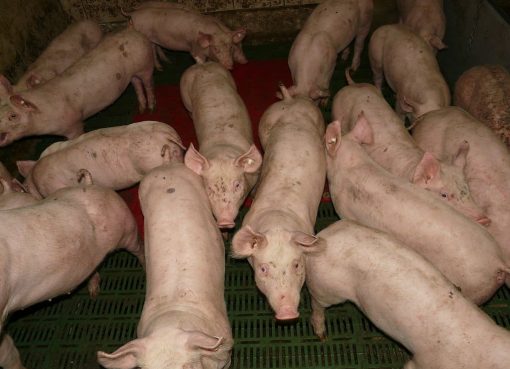Bhabesh Mili1 and Lukumoni Buragohain2
1Department of Veterinary Physiology& Biochemistry, College of Veterinary Sciences and Animal Husbandry, CAU (I), Jalukie, Peren, Nagaland-797110.
2Department of Animal Biotechnology, AAU, Khanapara, Guwahati-781022, Assam.
E-mail: lukumoni54@gmail.com
Nanotechnology can be defined as the design, synthesis and application of materials and devices whose size and shape have been engineered at the nanoscale. The word ‘nano’ is derived from the Latin language, which means ‘dwarf’. The nanomaterial was first observed by Richard Adolf Asigmondy in 1914, who studied on gold sols and other nonomaterials with sizes down to 10 nm. Later, the nanotechnology foundation was laid formally way back in the year 1959 by the renowned physicist, Richard Feynman and the term ‘Nano-technology’ was coined by Norio Taniguchi, a professor at Tokyo University of Science in 1974. In the year 1986, K. Eric Drexler first used the term ‘Nanotechnology’ in his book ‘Engines of Creation’. Several definitions have been proposed by different groups. The current agreement among the groups is that the scales from 1–100 nm define the size range for nanoparticles but it is often extended to include materials below 1 µm in size.
Nanotechnology has evolved rapidly in nearly every aspect of modern biology, medicine, etc. The application of nanotechnology in veterinary sciences has shown great promise in both health and optimization of productivity in animals. Currently, this technology is used for the treatment, disease diagnosis, drug delivery, preparation of nano-vaccines and nano-adjuvants, regenerative medicine/ tissue engineering, cancer therapy, reproduction such as cryopreservation of gametes & embryos, detection of reproductive status, sterilization, breeding, nutrition, including process meat products and food safety.
Application of nanotechnology in animal health:
Nanotechnology has the potential to solve many mysterious diseases of animals. The application of Nanotechnology is no longer merely a concept or theory, but it has become a new enabling technology over the years for rapid, efficient disease diagnosis and treatment.
The broad application of this technology in the field of animal health is as follows-
- Disease diagnosis/ pathogen detection: Nanotechnology has offered revolutionary solutions to the most serious problems faced by the veterinarians for the diagnosis of diseases like tuberculosis, brucellosis, methicillin-resistant Staphylococcus aureus, foot-and-mouth disease, and even infections with intracellular or blood pathogens. This technology provides a rapid screening/diagnostic tool with a minute quantity of proteins and chemicals in the sample. The application of high-density nano-array chips/ biochips (nanoparticles combined with antibodies or nucleic acid) has made rapid, sensitive, specific and portable disease diagnostics, including an early diagnosis of cancers. This technology, especially nano-biochips has helped not only in pathogens diagnosis but also in understanding the genetic predisposing factors of many diseases. Additionally, various nanoparticles are used in diagnostics based on their specific binding potential with the targeted bacterial toxins and their receptors. Also, nanoparticles are applied as an imaging agent for MRI, since they are brighter, stay longer in the body and allow repeated use of the imaging substance without hepatic/renal limitations during the daises.
- Therapeutic purpose: Nanotechnology is catering as an innovative therapeutic alternative to many diseases of animals including cancer, tissue engineering and regenerative medicine. Many drugs are effective in treating various diseases of animals but most of them also have certain limitations with regard to toxicity, poor aqueous solubility and cell impermeability. However, this technology could make it possible to engineer therapeutic agents by manipulating their physical/chemical properties for direct use as well as an extracellular matrix for stem cells differentiation, regeneration, remodeling and replacement of diseased tissues for use in regenerative medicine. These therapeutic agents are smaller in size and biocompatible, and they can easily cross different physiological barriers, or even through cell/ nuclear membranes to reach their target sites without inducing inflammatory or negative immune responses. Moreover, nanoparticles could be easily eliminated by the reticuloendothelial system of the host. Further, this technology also provides a slow release of the therapeutic agents for a prolonged period at the desired site. Thus, it enables the effective treatment of multi-antibiotic resistant robust pathogens (like MRSA and XDR−/TDR−/MDR-TB), intracellular pathogens (like Brucella and Leishmania infections), and even chronic non-infectious diseases.
- Development of prophylaxis: The nanoparticles are increasingly used in the field of vaccine preparation. This technology provides a safer, more efficient immune response with a long storage ability compared to the conventional method. Antigen-loaded nanoparticles can migrate directly to the lymph nodes resulting in the improvement of the vaccine efficiency. In addition, many nanoparticles can be used to prepare an adjuvant to facilitate slowing down the release of the antigens and to increase the efficiency of the vaccine. Several nanoparticles are also used in the efficient delivery of vaccines or drug molecules to the targeted site with minimum or negligible side effects.
Application of Nanotechnology in Animal Production:
- Animal Reproduction: Nanotechnology paves the way for new solutions to overcome many reproductive challenges and infertility in animals. This technology can be applied for optimization of the general reproductive performance of animals in terms of detection of estrus, inducing ovulation, freezing of sperms & oocytes, embryo, and reproductive tissue as well as diagnosis and treatment of reproductive disorders such as retained placenta. The recent development of the novel delivery system for the pheromones is an alternative to the male effect regarding induced estrus behaviors and induced ovulation in farm animals. This technology is also used to increase the post-thawed quality of cryopreserved sperm, oocytes and embryos. For example, microinjection of cryoprotectant propylene glycol containing the gold/metal nanoparticles enables the ultra-fast freezing, and later on fast and homogeneous thawing of the gametes.
- Animal breeding: Nanotechnology has offered advantages in the breeding management of animals. One solution is tracking oestrus and actuating breeding with the help of nanotubes implanted under the skin of animals. These nanotubes can bind and detect the estradiol antibody at the time of oestrus by near-infrared fluorescence. Thus, it helps in the detection of oestrus and actuates breeding in animals.
- Animal nutrition: Nanotechnology provides enormous advantages to the feed industry. This technology can be used efficiently for nanoencapsulation of feed ingredients to protect them from inactivation by light and oxidation or degradation by proteases and other digestive enzymes, and keep them stable at variable pH and temperature. Additionally, many nanomaterials are now available for commercial use to improve the growth rate, immune system and reproductive status of animals and birds. For example, nano-ZnO improves the growth rate, immune function, and reproductive status of animals and birds. It also decreases the prevalence of piglet diarrhea and increases the milk yield by reducing the somatic cell count in cows suffering from subclinical mastitis.
- Meat and meat products: Nanotechnology is very useful for development of sophisticated meat, egg and milk products with extended product shelf-life and long-term storage. Many nanomaterials are used as food ingredients/additives and packaging materials. It has also been used efficiently as a nanocarrier system in the meat/ food processing industry. The function of the nanocarrier system is to protect nutrients from degradation during processing and improve their stability during processing & storage.
Conclusion
Nanotechnology has been envisioned as very useful in almost all branches of veterinary science such as disease diagnosis, treatment, vaccine production, optimization of reproductive performance & fertility, breeding and nutritional management for the development of efficient, cost-effective feeding management to increase the production potential of the animals. Many research reports revealed revolutionary, innovative diagnostic and therapeutic approaches for many animal diseases including regenerative medicine. Hence, it needs extensive research to explore the full potential of nanotechnology in the field of animal health and production, especially in the countries like India.
References
Awate, S.; Babiuk, L.A.B. and Mutwiri, G. (2013). Front. Immunol. 4:114.
Boulaiz, H.; Alvarez, P.J.; Ramirez, A.; Marchal, J.A.; Prados, J.; Rodriguez-Serrano, F.; Peran, M.; Melguizo, C. and Aranega, A. (2011). International Journal of Molecular Sciences 12: 3303-3321.
El-Sayed, A. and Kamel, M. (2018). Environmental Science and Pollution Research 27: 19073–19086
Fuchs, E.; Tumbar, T. and Guasch, G. (2004). Cell 116(6),769–778.
Hashem, N.M. and Gonzalez-Bulnes, A. (2021). Animals 11, 1932.
Jurj, A.; Braicu, C.; Pop, L-A.; Tomuleasa, C.; Gherman, C.D. and BerindanNeagoe, I. (2017). Drug Des. Devel. Ther. 11,2871–2890.
Kim, B.Y.; Rutka, J.T. and Chan, W.C. (2010). N. Engl. J. Med. 363: 2434–2443.
Lee, K.T. (2010). Mat. Sci. 86: 138-150.
Manuja, A.; Kumar, B. and Singh, R.K. (2012). Nanotechnol. Dev. 2: 4.
McGlone, J.J.; Devaraj, S. and Garcia, A. (2019). Appl. Anim. Behav. Sci. 219: 104832
Meena, N.; Sahni, Y.; Thakur, D. and Singh, R. (2018). J. Entomol. Zool. Stud. 6(2), 167–175.
Mishra, A.; Swain, R.; Mishra, S.; Panda, N. and Sethy, K. (2014). Indian J. Anim. Nutr. 31:384–388.
Mishra, B.; Patel, B.B. and Tiwari, S. (2010). Nanomedicine 6:9–24
Mohantya, N.; Palaib, T.; Prustyc, B. and Mohapatrad, J. (2014). Vet. Res. 2: 90–95.
Moyer, T.J.; Zmolek, A.C. and Irvine, D.J. (2016). J. Clin. Invest. 126: 799–808.
Nadri, T.; Towhidi, A.; Zeinoaldini, S.; Martínez-Pastor, F.; Mousavi, M.; Noei, R.; Tar, M. and Sangcheshmeh, A.M. (2019). Theriogenology 133: 38–44.
Pmungkas, F.A.; Sianturi, R.S.G.; Wina, E. and Kusumaningrum, D.A.I. (2016). J. Anim. Vet. Sci. 21: 34–40.
Rajendran, D. (2013). Res. J. Biotechnol. 8: 1–3.
Rizzo, L.Y.; Theek, B; Storm, G.; Kiessling, F. and Lammers, T. (2013). Curr. Opin. Biotechnol. 24:1159–1166.
Saragusty, J. and Arav, A. (2011). Reproduction 141: 1–19.
Schneider, M.; Stracke, F.; Hansen, S. and Schaefer, U.F. (2009). Dermato-Endocrinology 1: 197–206.
Sun, L.; He, M.; Wu, C.; Zhang, S.; Dai, J. and Zhang, D. (2021). Animals 11: 1769.
Swain, P.S.; Rajendran, D.; Rao, S.B. and Dominic, G. (2015). Vet. World 8: 888–891.
Talukdar, D.; Sharma, R.; Sharma, K.A. and Kumar, R. (2014). Curr. Pharm. Biotechnol. 15: 1158–1165.
Torres-Sangiao, E.; Holban, A.M. and Gestal, M.C. (2016). Molecules 21: 867
Underwood, C. and Van Eps, A. (2012) Vet. J. 193: 12–23.
Yang, Z. and Sun, L. (2006) J. Shanxi. Agric. Sci. 3: 577–588.




